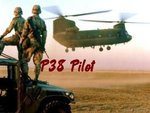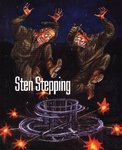trackend
Chief Master Sergeant
So how would you class the Army Commandos D each had to pass a very stiff selection but in terms of numbers it ran into several battalions all had high unarmed combat and self sufficientcy skills and specilist covert or raiding abilitys.
Inverary was a highly regarded although extremely dangerous training course.
To me these where the elite British force during WW2 as they where a large enough group to take on the Germans head on but also skilled enough to operate in small unit covert or raiding operations. this made them formidable all round soldiers.
For the Germans I would go for the Paratroops all selected for fitness and physical abilities and excellent combat troops tough, skilled and in my opinion the equal too any allied units.
I have always liked the US 29th rangers having trained alongside the British Commandos at Achnacarry they fought alongside and carried out many raids with and without the Commandos proving themselves to be troops of the highest order and effectivness,and there cliff scaling abilitys became a speciality un matched by any other units.
The SOE had some extremely efficient and courageous operatives the bravest generally being the radio operators due to the incredible almost suicidle risks they ran for each transmition.
Inverary was a highly regarded although extremely dangerous training course.
To me these where the elite British force during WW2 as they where a large enough group to take on the Germans head on but also skilled enough to operate in small unit covert or raiding operations. this made them formidable all round soldiers.
For the Germans I would go for the Paratroops all selected for fitness and physical abilities and excellent combat troops tough, skilled and in my opinion the equal too any allied units.
I have always liked the US 29th rangers having trained alongside the British Commandos at Achnacarry they fought alongside and carried out many raids with and without the Commandos proving themselves to be troops of the highest order and effectivness,and there cliff scaling abilitys became a speciality un matched by any other units.
The SOE had some extremely efficient and courageous operatives the bravest generally being the radio operators due to the incredible almost suicidle risks they ran for each transmition.


